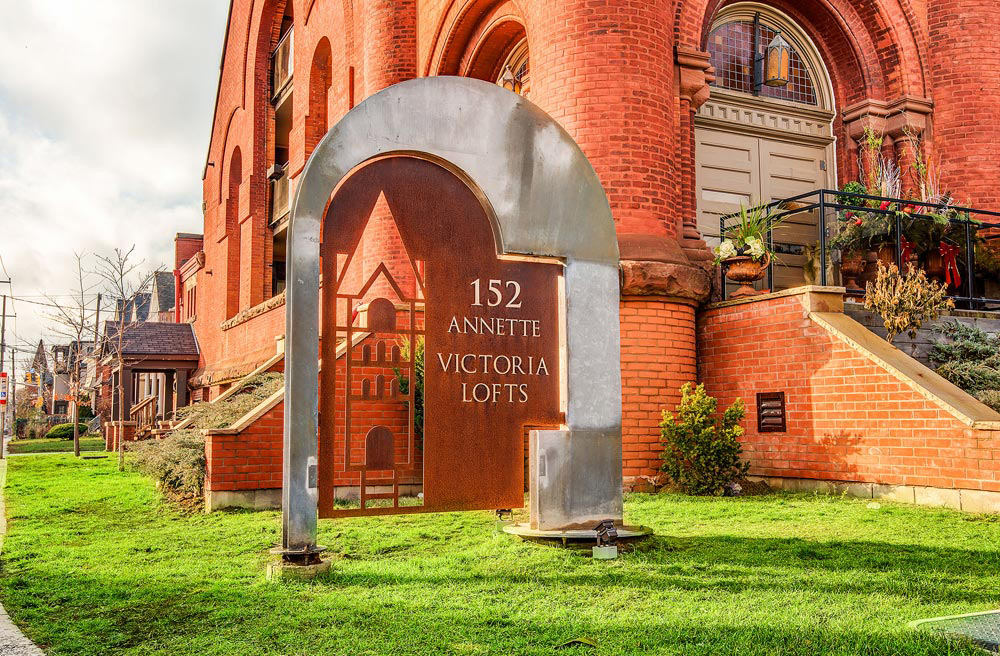
Signage for Victoria Lofts condominiums in Toronto, formerly Victoria Presbyterian Church (Photo: torontolofts.ca)
A dance company. A community theatre. A Boys and Girls Club. Apartments. Condos. A day center for those without homes. These are just some of the uses of neighborhood churches I saw sprinkled throughout Toronto on a recent vacation. Always on the lookout for churches (occupational hazard), it became clear that seeing one used by a worshiping congregation was the exception. This, I thought, is what a post-Christian context looks like: beautiful houses of worship transformed for all manner of other uses. Sobering, but not surprising.
On Sunday of that week, we went to church. I’d done some internet sleuthing and found a place within walking distance of where we were staying. It was a United Church of Canada congregation, that branch of the vine that came about in 1925 when the Methodists, Congregationalists and Presbyterians combined. We arrived early and attempted to enter through the large sanctuary doors. Locked. We spied a man about to go in a side door and asked him if he knew where we could find the service. He kindly told us to go around the corner, where we would find doors opened to the chapel. The building looked worse for wear but the few people already present very welcoming. The pastor, wearing a Hawaiian shirt (it was warm, windows open, a rotating fan in the chancel), spoke to us and told us the roof was being repaired in the sanctuary, hence our being in the chapel. A member arrived to set up the screen, camera, projector and ZOOM link. The service, we learned, was a hybrid one.
By the appointed hour twenty-five of us, including the pastor and pianist, had gathered, about half in person and half online. The liturgy was familiar and included the Apostles’ Creed. The tone informal. The focus on community and the coffee hour that was to follow.
We learned that the large building was utilized often, by several other congregations, some Christian, some not, by community groups, a yoga instructor, support groups. Hence, the well-worn nature of the facilities.
Big building. Small congregation. Creative use of a space in a prime location. A diversity of people that belied the number gathered. Far more of the city’s inhabitants walking on the sidewalk outside the chapel than worshiping inside. This is what post-Christianity looks like. Both surprising and utterly predictable.
I left with the following thoughts:
- The church is resilient. (Jesus did say that even the gates of hell will not prevail against it.)
- The church often has an outsized impact on the community that surrounds it. (Think leaven, mustard seeds and the like.)
- The church is both the building and the people, both what happens on Sunday morning and what happens all through the week. (Jesus went to the synagogue and preached, taught, and healed on the streets.)
- Post-Christianity is daunting, but also exciting. (God is always doing a new thing.)
- We here at FPC Greensboro are TREMENDOUSLY blessed with every manner of resource. (We have an embarrassment of riches.)
- Given all of the above: What are we called to do? Who are we called to be? What might God be doing with and through us?
It will be surprising, sobering, daunting, exciting, and, because Jesus is Lord, we can predict with utter certainty that it will be very good.
Peace,
Jill

